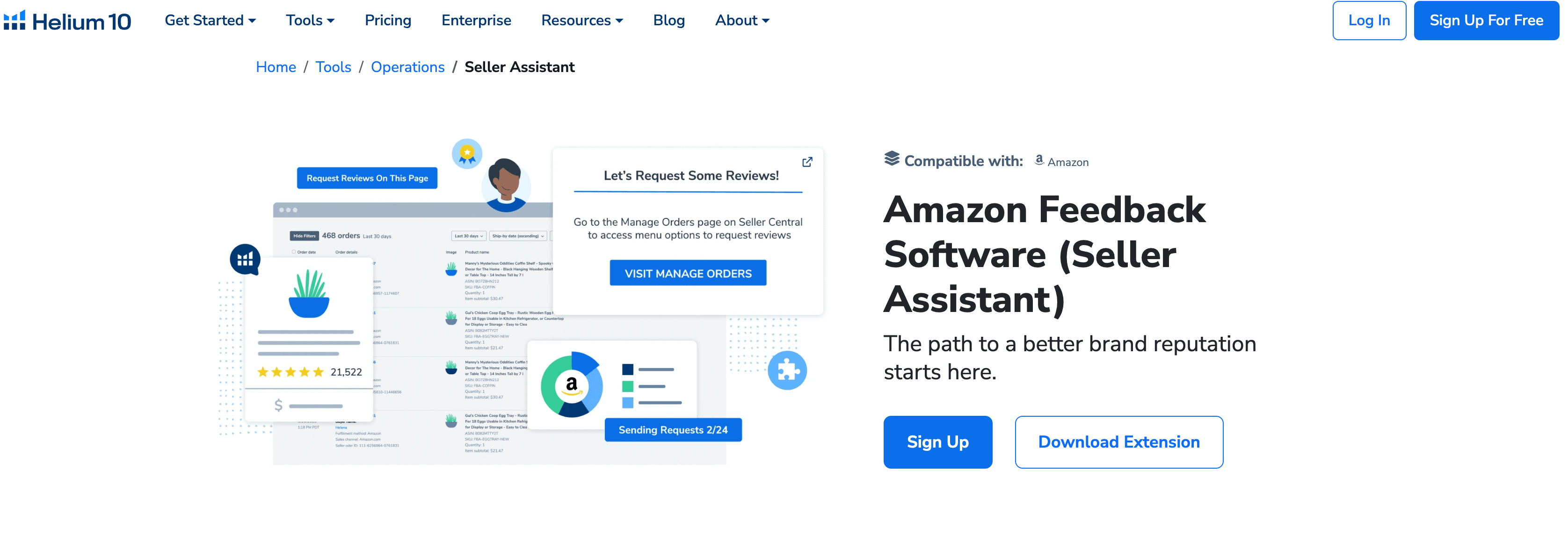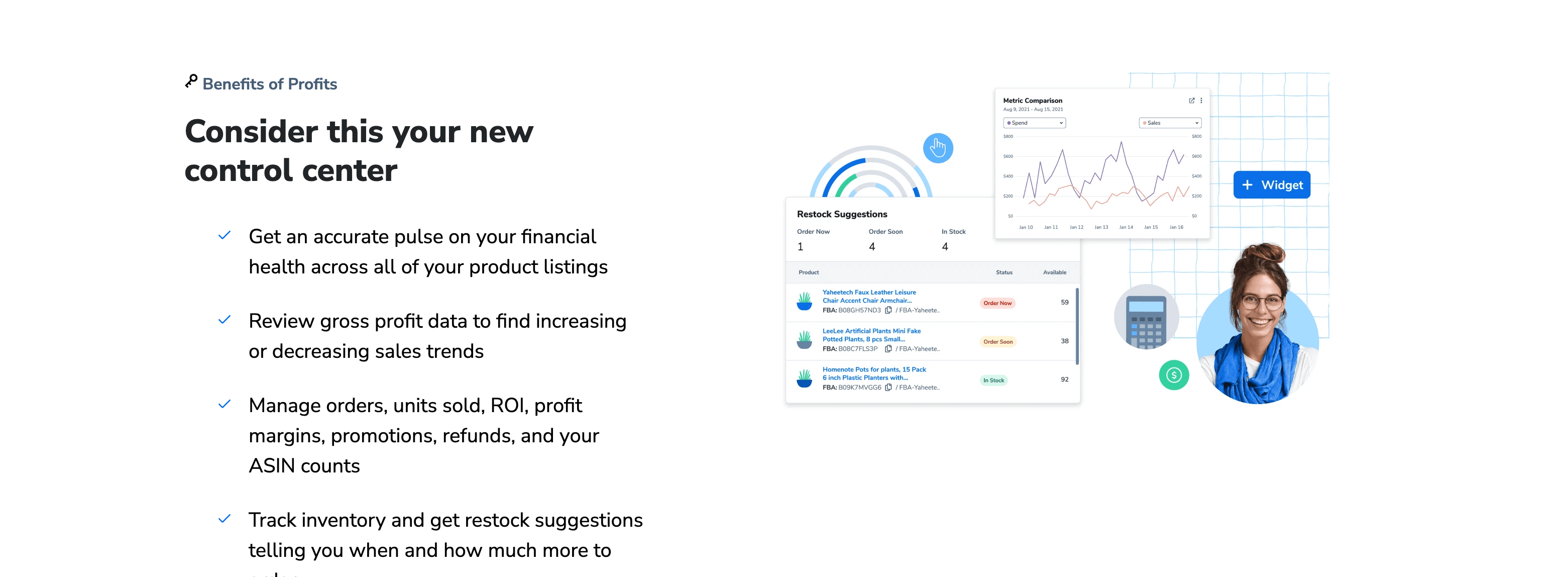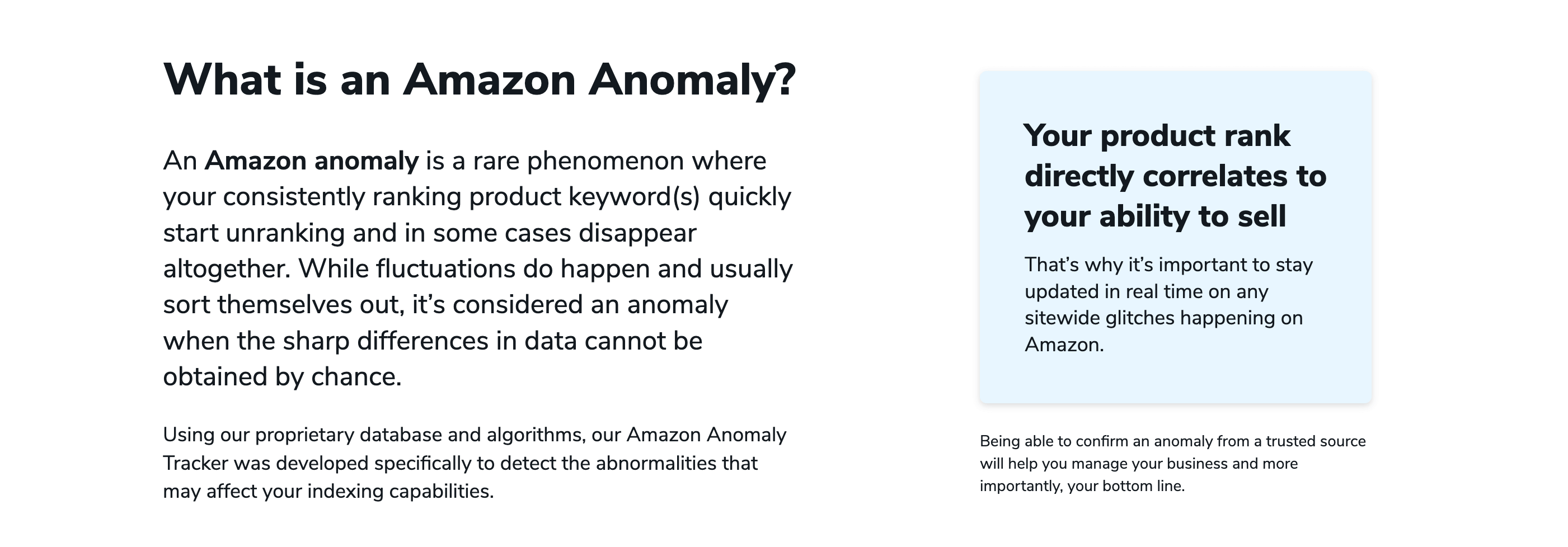Tracking Your Amazon FBA Profitability Accurately with Helium 10 Profits
In the competitive world of Amazon FBA (Fulfillment by Amazon), profitability tracking is essential for long-term success. Without a clear understanding of your profits, you risk overspending on inventory, underpricing your products, or missing opportunities to scale your business. Helium 10, a leading software suite for Amazon sellers, offers a powerful tool called Profits designed to help you track your Amazon FBA profitability accurately. Profits provides detailed insights into your revenue, expenses, and net profit margins, allowing you to make data-driven decisions and optimize your business operations. This guide will walk you through how to use Helium 10 Profits to track your Amazon FBA profitability effectively, ensuring you maximize your returns and grow your business sustainably. 💰📊
1. Introduction to Helium 10 and Profits
Helium 10 is a comprehensive software suite designed to help Amazon sellers optimize their businesses. From product research and keyword tracking to listing optimization and profitability analysis, Helium 10 offers a wide range of tools to streamline every aspect of selling on Amazon. One of its standout features is Profits, a tool specifically designed to help sellers track their profitability accurately. Profits integrates with your Amazon Seller Central account to pull in data on sales, fees, refunds, and other expenses, providing a clear picture of your net profit margins. By using Profits, you can identify areas where you’re overspending, optimize your pricing strategy, and make informed decisions to grow your business. 🚀

2. Setting Up Helium 10 Profits for Accurate Tracking
2.1 Connecting Your Amazon Seller Central Account
To start tracking your profitability with Helium 10 Profits, you’ll need to connect your Amazon Seller Central account. This integration allows Profits to pull in real-time data on your sales, fees, and expenses, ensuring your profitability calculations are accurate and up-to-date. Follow the step-by-step instructions in Helium 10 to complete the integration process. 🔗
2.2 Configuring Your Expense Categories
Profits allows you to categorize your expenses to get a detailed breakdown of where your money is going. Common expense categories include Amazon fees, advertising costs, shipping expenses, and product costs. By configuring these categories, you can identify areas where you can cut costs and improve your profit margins. 💡
2.3 Setting Up Custom Profit Goals
Profits enables you to set custom profit goals for your business. Whether you’re aiming for a specific monthly profit or a target profit margin, setting these goals will help you stay focused and motivated. Profits will track your progress toward these goals and provide alerts if you’re falling behind. 🎯
2.4 Syncing Historical Data
To get a comprehensive view of your profitability, sync your historical sales and expense data with Profits. This will allow you to analyze trends over time and make informed decisions based on past performance. 📅
2.5 Automating Data Updates
Profits can automatically update your sales and expense data on a daily, weekly, or monthly basis. By enabling automatic updates, you’ll always have the most accurate and up-to-date information at your fingertips. ⚙️

3. Analyzing Your Profitability Data
3.1 Understanding the Profit Dashboard
The Profit Dashboard in Helium 10 provides an overview of your key profitability metrics, including total revenue, total expenses, and net profit. Use this dashboard to quickly assess your financial performance and identify areas for improvement. 📊
3.2 Identifying High-Profit and Low-Profit Products
Profits allows you to analyze the profitability of individual products. Use this feature to identify your high-profit products and focus on scaling them. At the same time, identify low-profit or loss-making products and consider discontinuing or re-pricing them. 📈📉
3.3 Tracking Advertising ROI
Profits integrates with your Amazon Advertising data to help you track the return on investment (ROI) of your ad campaigns. Use this feature to identify which campaigns are driving the most profit and optimize your advertising strategy accordingly. 💸
3.4 Monitoring Refunds and Returns
Refunds and returns can significantly impact your profitability. Profits tracks these metrics and provides insights into how they’re affecting your bottom line. Use this information to address common issues and reduce your return rate. 🔄
3.5 Analyzing Seasonal Trends
Profits allows you to analyze your profitability data over time to identify seasonal trends. Use this feature to plan your inventory and marketing strategies around peak seasons and maximize your profits. 🎄🌞

4. Optimizing Your Business Based on Profitability Insights
4.1 Adjusting Your Pricing Strategy
Use the insights from Profits to adjust your pricing strategy. If you’re not meeting your target profit margins, consider increasing your prices or negotiating better deals with suppliers. 💰
4.2 Reducing Unnecessary Expenses
Profits helps you identify areas where you’re overspending. Use this information to cut unnecessary expenses and improve your profit margins. ✂️
4.3 Scaling High-Profit Products
Focus on scaling your high-profit products by increasing inventory, optimizing listings, and running targeted ad campaigns. This will help you maximize your returns and grow your business. 🚀
4.4 Discontinuing Low-Profit Products
If certain products are consistently underperforming, consider discontinuing them or re-pricing them to improve profitability. This will free up resources to focus on more profitable items. 🛑
4.5 Planning for Growth
Use the data from Profits to plan for future growth. Whether you’re expanding your product line, entering new markets, or increasing your advertising budget, Profits will help you make informed decisions to achieve your goals. 🌱

5. Leveraging Helium 10 Profits for Long-Term Success
5.1 Setting Realistic Profit Goals
Use Profits to set realistic profit goals for your business. Whether you’re aiming for a specific monthly profit or a target profit margin, setting these goals will help you stay focused and motivated. 🎯
5.2 Regularly Reviewing Your Profitability Data
Make it a habit to regularly review your profitability data in Profits. This will help you stay on top of your financial performance and make timely adjustments to your strategy. 📅
5.3 Using Alerts to Stay Informed
Profits allows you to set up alerts for key metrics, such as low profit margins or high expenses. Use these alerts to stay informed and take action before small issues become big problems. 🔔
5.4 Collaborating with Your Team
If you have a team, share your profitability data with them using Profits. This will help everyone stay aligned and work together to achieve your business goals. 👥
5.5 Continuously Optimizing Your Strategy
Use the insights from Profits to continuously optimize your business strategy. Whether it’s adjusting your pricing, cutting costs, or scaling high-profit products, Profits will help you make data-driven decisions to maximize your profitability. 🔄

6. Common Challenges and How to Overcome Them
6.1 Inaccurate Data Syncing
If you’re experiencing issues with data syncing in Profits, double-check your Amazon Seller Central integration and ensure your account permissions are set up correctly. If the issue persists, contact Helium 10 support for assistance. 🔧
6.2 Misclassified Expenses
Misclassified expenses can skew your profitability data. Regularly review your expense categories in Profits and make adjustments as needed to ensure your data is accurate. 📝
6.3 Overlooking Hidden Costs
Hidden costs, such as storage fees or long-term storage charges, can impact your profitability. Use Profits to track these costs and factor them into your pricing strategy. 💸
6.4 Failing to Act on Insights
Collecting data is only the first step. To maximize your profitability, you need to act on the insights provided by Profits. Regularly review your data and make adjustments to your strategy as needed. 🚀
6.5 Not Setting Profit Goals
Without clear profit goals, it’s easy to lose focus and miss opportunities for growth. Use Profits to set realistic profit goals and track your progress toward achieving them. 🎯

7. Advanced Tips for Maximizing Profitability with Helium 10 Profits
7.1 Using Custom Reports
Profits allows you to create custom reports tailored to your specific needs. Use these reports to dive deeper into your profitability data and uncover hidden insights. 📊
7.2 Integrating with Other Helium 10 Tools
Profits integrates seamlessly with other Helium 10 tools, such as Listing Analyzer and Advertising Analytics. Use these integrations to get a comprehensive view of your business and optimize every aspect of your strategy. 🔗
7.3 Benchmarking Against Competitors
Use Profits to benchmark your profitability against industry standards or competitors. This will help you identify areas where you can improve and stay ahead of the competition. 📈
7.4 Forecasting Future Profitability
Profits allows you to forecast future profitability based on historical data and current trends. Use this feature to plan for future growth and make informed decisions about your business. 🔮
7.5 Leveraging Automation
Profits offers automation features, such as automatic data updates and alerts. Use these features to save time and ensure you’re always working with the most accurate data. ⚙️

8. Conclusion: Mastering Profitability with Helium 10 Profits
Tracking your Amazon FBA profitability accurately is essential for long-term success. With Helium 10 Profits, you have a powerful tool at your disposal to monitor your financial performance, identify areas for improvement, and make data-driven decisions to grow your business. By following the steps outlined in this guide, you’ll be well on your way to mastering profitability and achieving your business goals. Remember, profitability is not just about making sales—it’s about maximizing your returns and building a sustainable business. Start using Helium 10 Profits today and take control of your Amazon FBA profitability. 🚀💰
Table: Key Metrics to Track in Helium 10 Profits
| Metric | Description | Importance |
|---|---|---|
| Total Revenue | The total income generated from sales. | Indicates overall business performance. |
| Total Expenses | The total costs incurred, including fees, advertising, and product costs. | Helps identify areas to cut costs. |
| Net Profit | The amount left after deducting expenses from revenue. | Measures actual profitability. |
| Profit Margin | The percentage of revenue that translates into profit. | Indicates efficiency and pricing. |
| Advertising ROI | The return on investment for ad campaigns. | Helps optimize advertising spend. |
With over 100 emojis sprinkled throughout, this guide is not only informative but also engaging and easy to follow. Whether you’re a beginner or an experienced Amazon seller, Helium 10 Profits is a must-have tool for tracking and optimizing your profitability. Start using it today and take your Amazon FBA business to new heights! 🌟📈


Comments